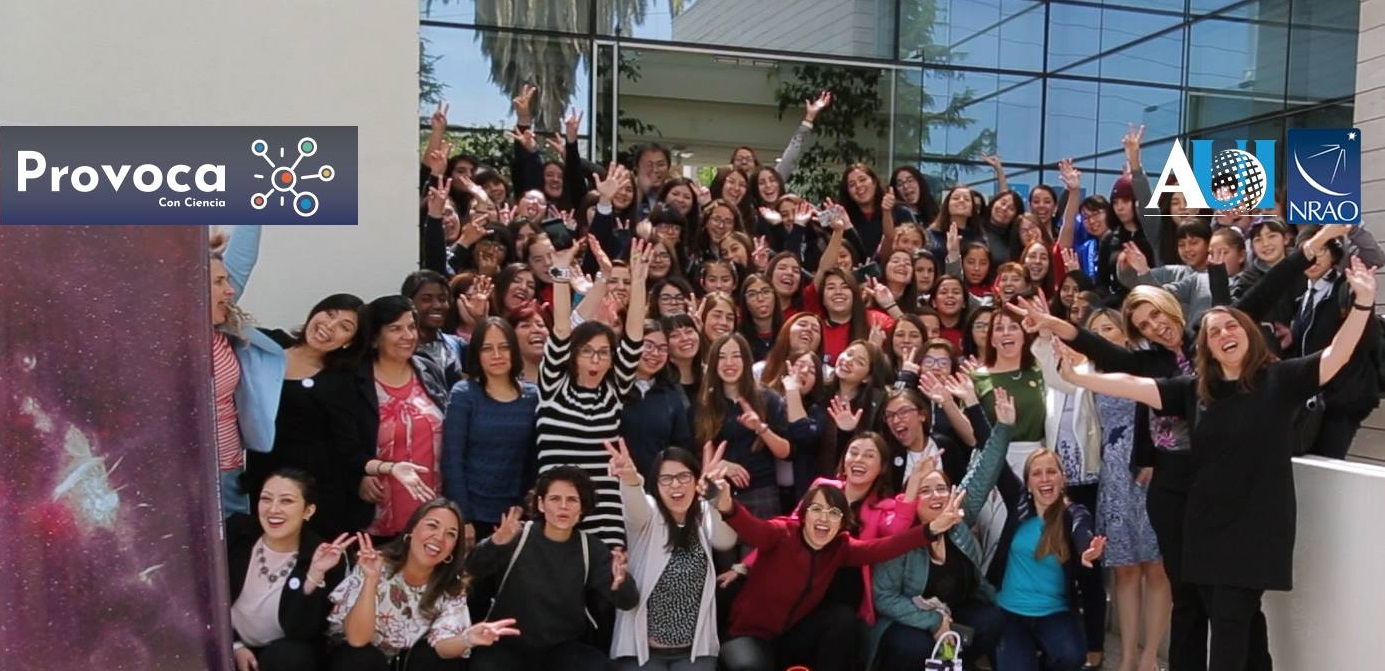The [CII] Resolved ISM in STar-forming galaxies with ALMA (CRISTAL survey) peered back to when the Universe was only about one billion years old – a mere toddler in cosmic terms. These observations are helping scientists understand how galaxies formed and evolved from primordial gas clouds into the organized structures we see today.
Recent News
NSF NRAO Leads Critical Spectrum Studies to Safeguard Radio Astronomy
The U.S. National Science Foundation National Radio Astronomy Observatory (NSF NRAO) has received funding to expand its study of an invisible—and crucial—scientific and technological resource: the radio spectrum.
Largest Oort Cloud Comet Ever Observed Reveals Its Secrets with ALMA’s Powerful Gaze
A team of astronomers has made a groundbreaking discovery by detecting molecular activity in comet C/2014 UN271 (Bernardinelli-Bernstein)—the largest and second most distantly active comet ever observed from the Oort Cloud.
Inspiring, Retaining and Promoting Female Talent in STEM Careers

By: Paulina Bocaz, representative of AUI/NRAO in Chile and leader of the PROVOCA initiative
Retaining and promoting female talent in science, technology, engineering, and mathematics (STEM) is a goal that must be embraced by large scientific facilities, civil society, academia and the private sector. A STEM career can be long and full of obstacles for underrepresented minorities, including women, who are strongly influenced by family expectations, teacher bias and work environments plagued by stereotypes. More female role models in STEM are needed to inspire and increase women participation, and they are currently insufficient to retain female employees and stimulate their professional growth into leadership positions.
Let’s take the Chilean case. The exceptional conditions of the Atacama Desert sky have attracted some of the largest and most advanced astronomical projects, including NSF-funded big facilities such as the Atacama Large Millimeter/submillimeter Array (ALMA), managed by AUI/NRAO in representation of North America. In the next decade, Chile will concentrate up to 70% of the world’s capabilities to observe the heavens.
This natural competitive advantage has surely inspired girls to choose astronomy and other STEM careers in Chile? Paradoxically the answer is no. According to a 2020 study by UN Women, among 18 countries in Latin America and the Caribbean, Chile has the lowest percentage of women with an academic degree in information and communication technologies (12.7%); ranks third lowest in engineering, manufacturing and construction (17.7%); and fourth lowest in natural sciences, mathematics and statistics (46.5%). This discouraging reality is counterintuitive when one considers Chile’s high levels of economic and human development in Latin America and is compounded by a leaky pipeline of talent. As R&D careers advance, moving from assistant positions, to full professorship to leadership of departments and universities, there are fewer and fewer women, a situation that has come under scrutiny but changes slowly.
As part of AUI/NRAO’s mission to broaden participation and have a positive societal impact, we leverage big facilities as a unique platform to do this. In 2019 we launched PROVOCA, a communications campaign to raise the visibility of female STEM professionals and girls who aspire to follow one of these careers. PROVOCA is an acronym (PROmote + VOCAtions) and wordplay to foster STEM careers, but also to provoke cultural changes. The PROVOCA campaign was recognized by the National Science Foundation STEM for All Video Showcase with a Public Choice Award in 2021.
The communications campaign was successful and far-reaching, but we soon realized that inspiration is not enough to retain and stimulate professional growth. To accomplish this, it is necessary to guide and support girls and young women throughout their STEM journeys. The PROVOCA mentorship program and network takes on this challenge, involving female STEM professionals and students in a long-term commitment. Training spanned ten months (May to December, 2021) and comprised 350 hours of lectures, coaching sessions, networking meetings, roundtable discussions, and final projects that each participant presented in front of their peers. Theoretical and practical lessons helped develop skills that are key to mentoring, including active listening, interpersonal relations, communications and leadership. Although the primary focus was on preparing mentors to guide students, the experience had a profound impact on the mentors themselves. As research into the most effective ways to retain underrepresented minorities in STEM attests, and as feedback from PROVOCA mentors confirmed, a network of professional peers is crucial to the affirmation of their own STEM identity, as well as the support of the next generation of STEM professionals. A total of 28 women completed their training and were certified as PROVOCA mentors in December 2021.
Now that the PROVOCA mentors’ network is a reality, the next goal is to introduce them to the community, so that high school girls and college women from all over the country can get to know them and find the support they need to pursue a STEM career. In April 2022, AUI/NRAO will open an application process for students who are interested in a PROVOCA mentorship (www.provoca.org). We expect the power of this network to be exponential, recruiting and training new mentors among students in years to come, and encouraging other organizations to replicate the experience.
Recent News
ALMA Reveals Stunning Details of Infant Galaxies in the Early Universe
The [CII] Resolved ISM in STar-forming galaxies with ALMA (CRISTAL survey) peered back to when the Universe was only about one billion years old – a mere toddler in cosmic terms. These observations are helping scientists understand how galaxies formed and evolved from primordial gas clouds into the organized structures we see today.
NSF NRAO Leads Critical Spectrum Studies to Safeguard Radio Astronomy
The U.S. National Science Foundation National Radio Astronomy Observatory (NSF NRAO) has received funding to expand its study of an invisible—and crucial—scientific and technological resource: the radio spectrum.
Largest Oort Cloud Comet Ever Observed Reveals Its Secrets with ALMA’s Powerful Gaze
A team of astronomers has made a groundbreaking discovery by detecting molecular activity in comet C/2014 UN271 (Bernardinelli-Bernstein)—the largest and second most distantly active comet ever observed from the Oort Cloud.
